猫咪应用苹果版下载
A story about cognitive load and a stark pivot of ideas
一个关于认知负担和观念的鲜明枢纽的故事
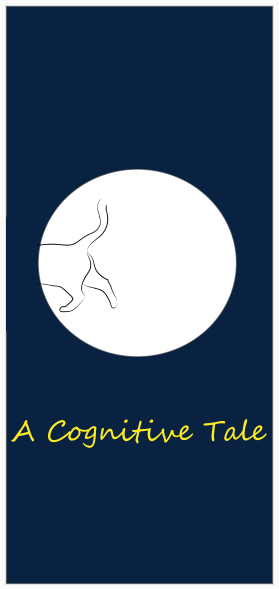
Challenge: create a digital experience based on a design principle
挑战:根据设计原则创建数字体验
Timeframe: 2 weeks
时间范围:2周
Individual work for Visual Fundamentals
视觉基础的个人作品
“All communication between the readers of an image and the makers of an image must now take place on a two-dimensional surface. Escaping this flatland is the essential task of envisioning information — for all the interesting worlds (physical, biological, imaginary, human) that we seek to understand are inevitably and happily multivariate in nature. Not flatland.” — Edward R. Tufte, Envisioning Information (1990)
“图像阅读者与图像制作者之间的所有交流现在都必须在二维表面上进行。 逃离这片平坦的土地是构想信息的基本任务-因为我们试图了解的所有有趣世界(物理,生物,虚构,人类)在本质上都是不可避免的且快乐的多元。 不是平地。” —爱德华·塔夫特,《远景信息》(1990年)
A question — what is something that takes up the most cognitive load?
一个问题—什么是承担最大认知负担的事情?
For me I started this design prompt with brainstorming this question, and how this question could transcend the flatland of screens and be something dimensional, ended as a story about a cat. Which from my experience isn’t unsurprising for design projects — we often end up in unexpected places.
对我而言,我首先集思广益地思考了这个问题,然后开始思考这个问题,然后这个问题如何超越屏幕的平地而成为三维事物,以关于猫的故事结束。 根据我的经验,对于设计项目而言,这并不是不足为奇的-我们常常会遇到意想不到的地方。
For my class Visual Fundamentals I was tasked in designing an experience that showcased the principle of Cognitive Load. A classic example of something that helps with cognitive load is Google Calendar — a place you can hand off information and free up your brain for other things, and when the time comes a reminder will (hopefully) show up in your phone or computer.
在我的视觉基础课上,我的任务是设计一种展示认知负荷原理的体验。 关于Google日历,可以帮助您减轻认知负担的一个经典示例是Google日历,您可以在该地方传递信息并腾出时间去做其他事情,当时间到来时,提醒(希望)会出现在手机或计算机上。
As someone who is often preoccupied with how we can make life easier for those who struggle with memory, organization, and motivation, I wondered what cognitive load would look like outside of the flatland, and going beyond keeping appointments. For me, the ultimate thing that helps with cognitive load is a personal assistant. I thought of P.G Wodehouse’s ever-rescuing valet, Jeeves, who always steers the bumbling protagonist Wooster towards the right path. Tony Stark’s digital assistant Jarvis helps in the same manner, not only giving reminders but also offering moral advice. In modern times, the Amazon helper Alexis seems eventually to get to this place, for now offering the weather, setting alarms, and answering facts (that are spoken clearly enough).
作为一个经常沉迷于如何使那些为记忆,组织和动力而奋斗的人生活变得更轻松的人,我想知道在平地之外超越保持约会的认知负荷会是什么样子。 对我而言,帮助认知负荷的最终目的是个人助理。 我想到了PG沃德豪斯(PG Wodehouse)不断招募的代客,吉夫(Jeeves),他总是把笨拙的主人公伍斯特(Wooster)带到正确的道路。 托尼·史塔克(Tony Stark)的数字助理贾维斯(Jarvis)以同样的方式提供帮助,不仅提供提醒,还提供道德建议。 在现代,亚马逊助手亚历克西斯(Alexis)似乎最终到达了这个地方,因为它现在提供天气,设置警报和回答事实(这已经足够清楚地说明了)。
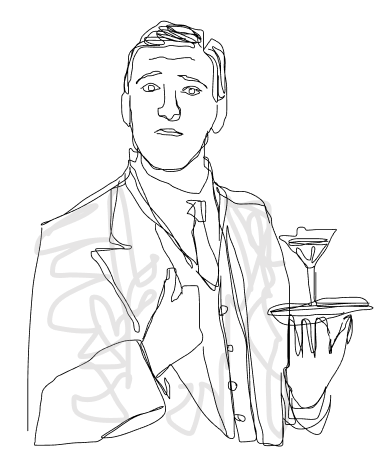
What would a personal assistant look like not embodied in a person or a voice, but rather in a space? And what would this space look like if it were to help you with the things that take up the most cognitive space?
没有体现在人或声音中,而是体现在空间中的私人助理会是什么样? 如果该空间可以帮助您处理占据最大认知空间的事物,那么它将是什么样?
For me the things that take up the most cognitive space are not necessarily appointments, although those are very important, but rather questions on how to live and maintain a good and consistent life. I always want to see a visual representation of my life, it’s path as well as how it’s woven into the lives of others (see my idea of life maps here), and the habits that I have maintained. I would like to see my ultimate goals highlighted, almost like a North Star, and see these actions broken down years and then by days.
对我来说,占据最大认知空间的事物不一定是任命,尽管这些任命非常重要,而是有关如何生活和保持良好和始终如一的生活的问题。 我一直想看到我的生活的视觉表现,它的路径以及它如何融入他人的生活中(请参阅此处的生活地图概念)以及我所养成的习惯。 我希望看到自己的最终目标几乎像北极星一样突出,并且看到这些行为分解了数年,然后是几天。
So a virtual assistant space would be somewhere that showcases my life in visual information, showing me where I’ve come from and where I’m going. Perhaps, just like Jeeves, it could give kind suggestions of what habits I should try to include based on my personality and interests. I started brainstorming this idea with sketches and old photographs I found.
因此,虚拟助理空间将在视觉信息上展示我的生活,向我展示我来自何处以及要去往何处。 也许像Jeeves一样,它可以根据我的性格和兴趣为我应该尝试包括哪些习惯提供一些建议。 我开始用发现的草图和旧照片集思广益。
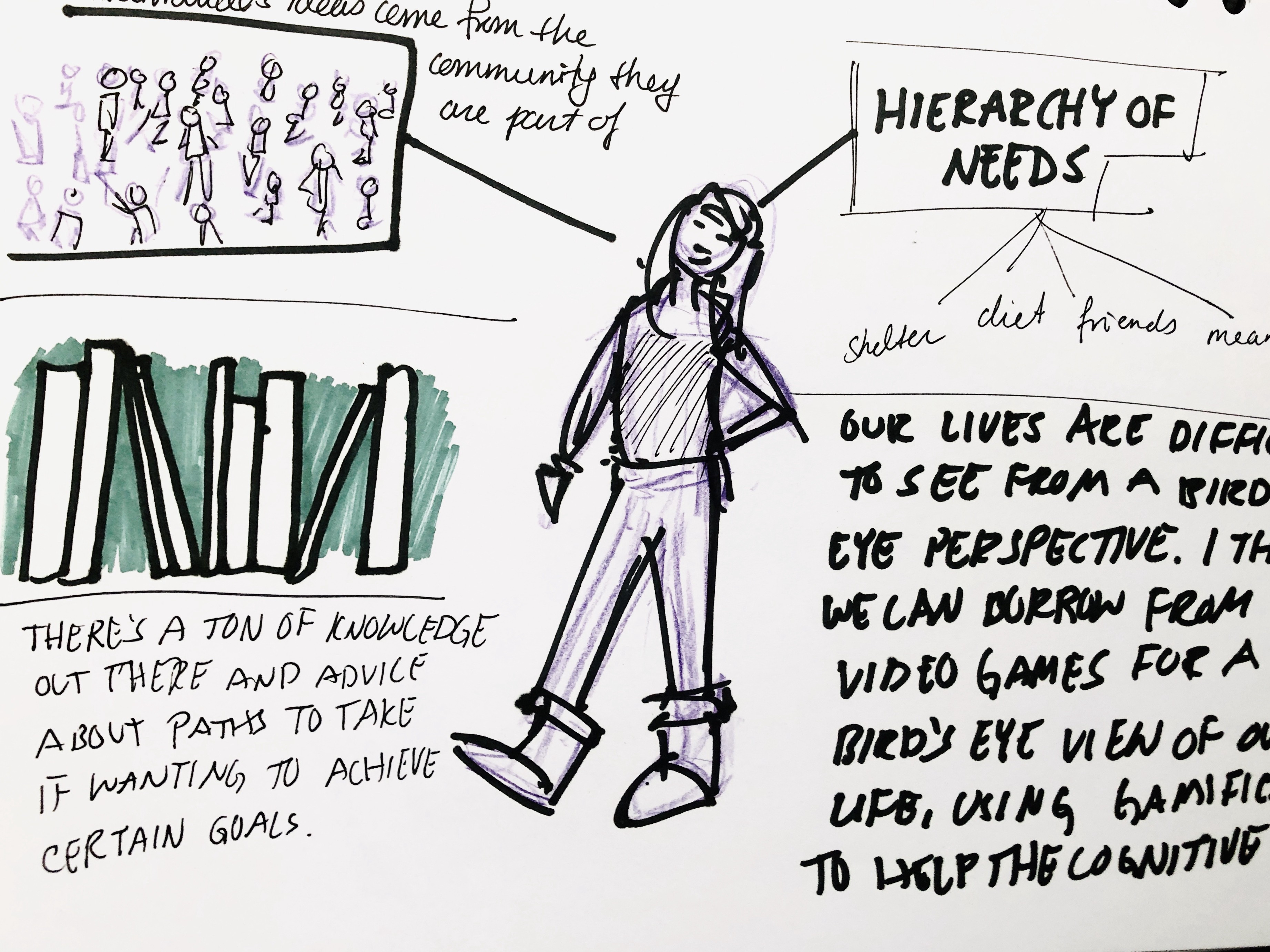
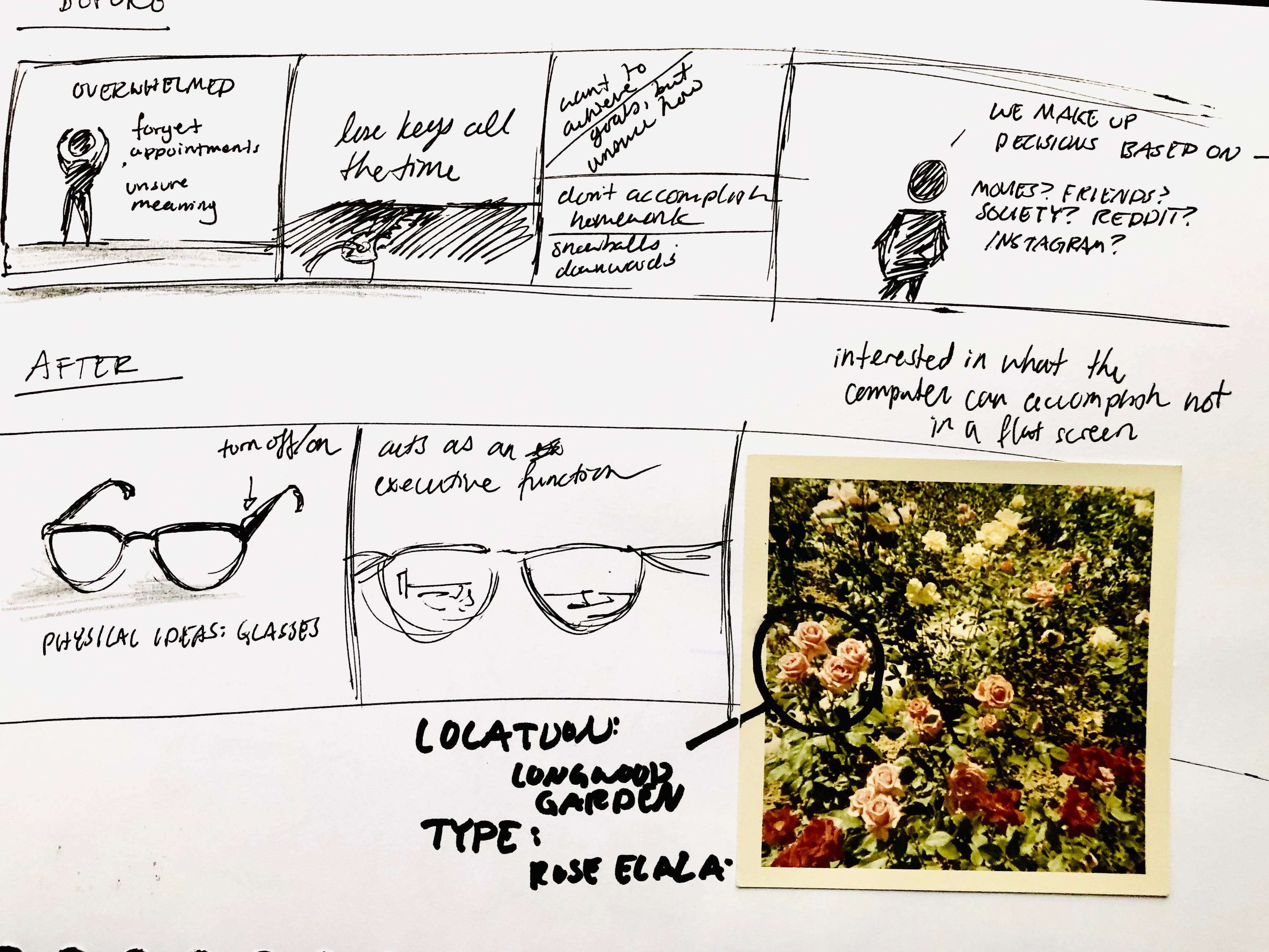
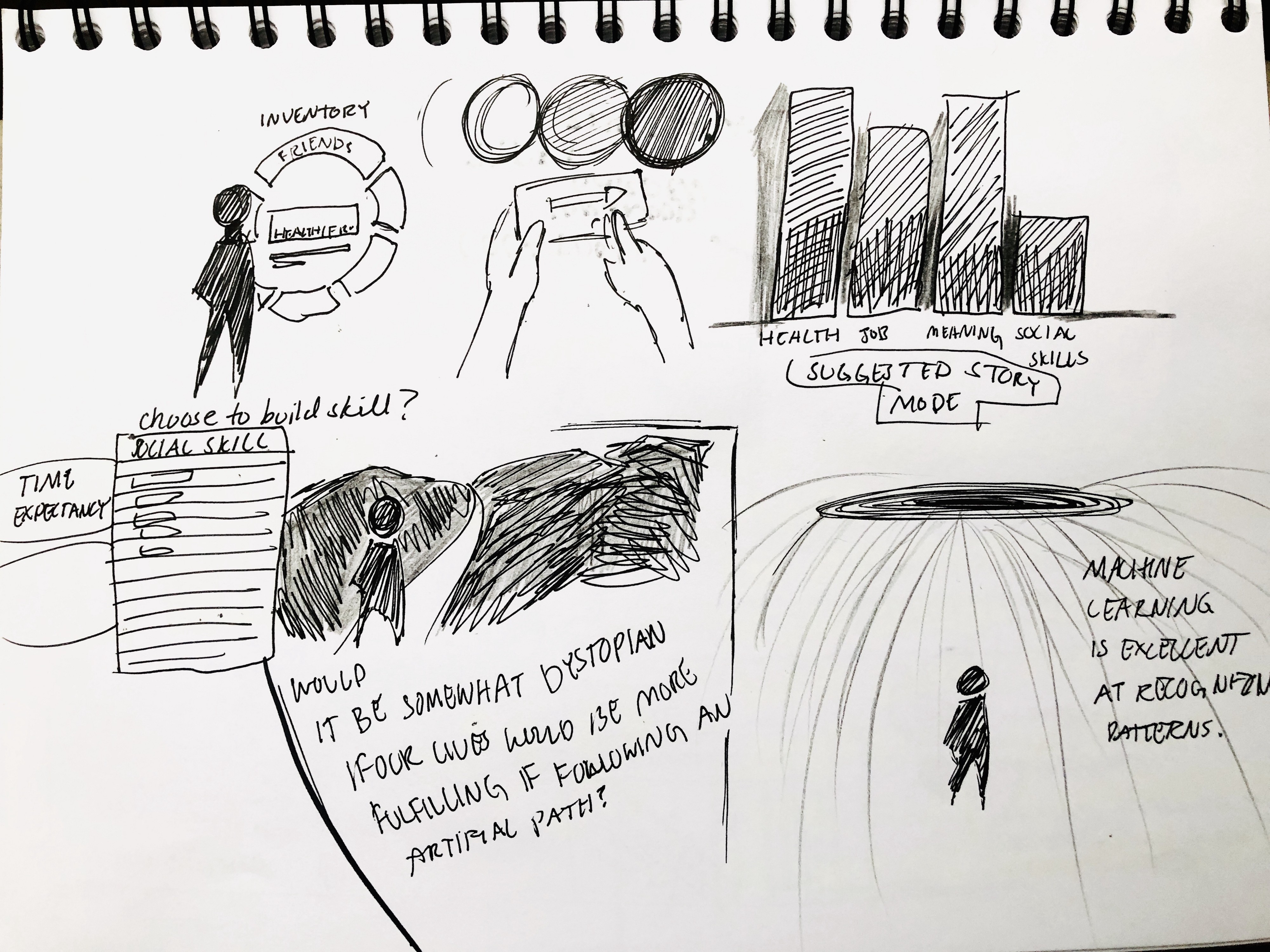
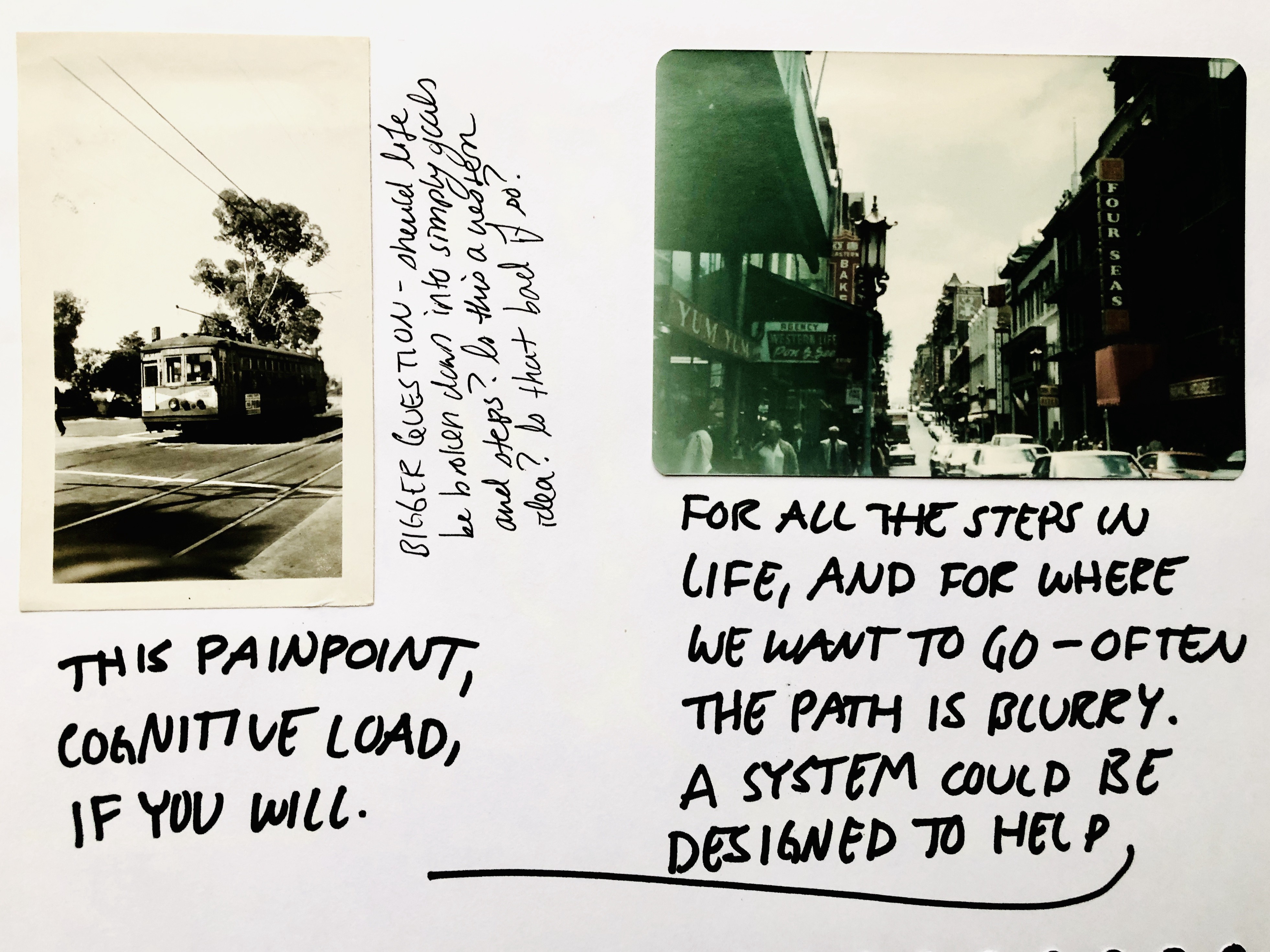
枢轴 (The Pivot)
When I brought in my sketches for feedback, I was told my scope was too large for the project and would need to dial back my plans. The digital experience was expected was in the form of an app, not augmented reality or virtual reality.
当我提出草图以征求反馈时,我被告知我的范围对于该项目而言太大,需要回拨我的计划。 预期的数字体验是应用程序形式的,而不是增强现实或虚拟现实。
This is a problem I’ve dealt with before, which is if given a prompt I end up leaping into abstract ideas and then semi-concrete ideas, needing someone or something to counterbalance me and bring me back to ground a bit. With the timeframe (2 weeks) I suggested making a rough virtual reality with still frames and sketches. If I couldn’t borrow Oculus glasses, perhaps I could create small rooms out of cardboard to represent the space of virtual reality.
这是我以前处理过的一个问题,如果给出提示,我最终会跳入抽象的想法,然后跳入半具体的想法,需要有人或某些东西来平衡我并使我重新站起来。 在时间范围内(2周),我建议使用静止帧和草图进行粗略的虚拟现实。 如果我不能借用Oculus眼镜,也许我可以用纸板创建小房间来代表虚拟现实的空间。
I was told my ideas would have to wait for the time, and to rethink how cognitive load could be shown through an app.
有人告诉我,我的想法必须等待时间,然后重新考虑如何通过应用程序显示认知负荷。
Since I had initially thought of this visual information somehow transcending the 2d world, I was a bit stuck when it came to making it into an app. Knowing that I relate well to stories, I decided to scrap my original idea and move forward with a story about cognitive load.
由于我最初想到的视觉信息以某种方式超越了2d世界,因此在将其应用到应用程序时我有些困惑。 知道自己与故事有很好的关系后,我决定放弃最初的想法,继续撰写有关认知负荷的故事。
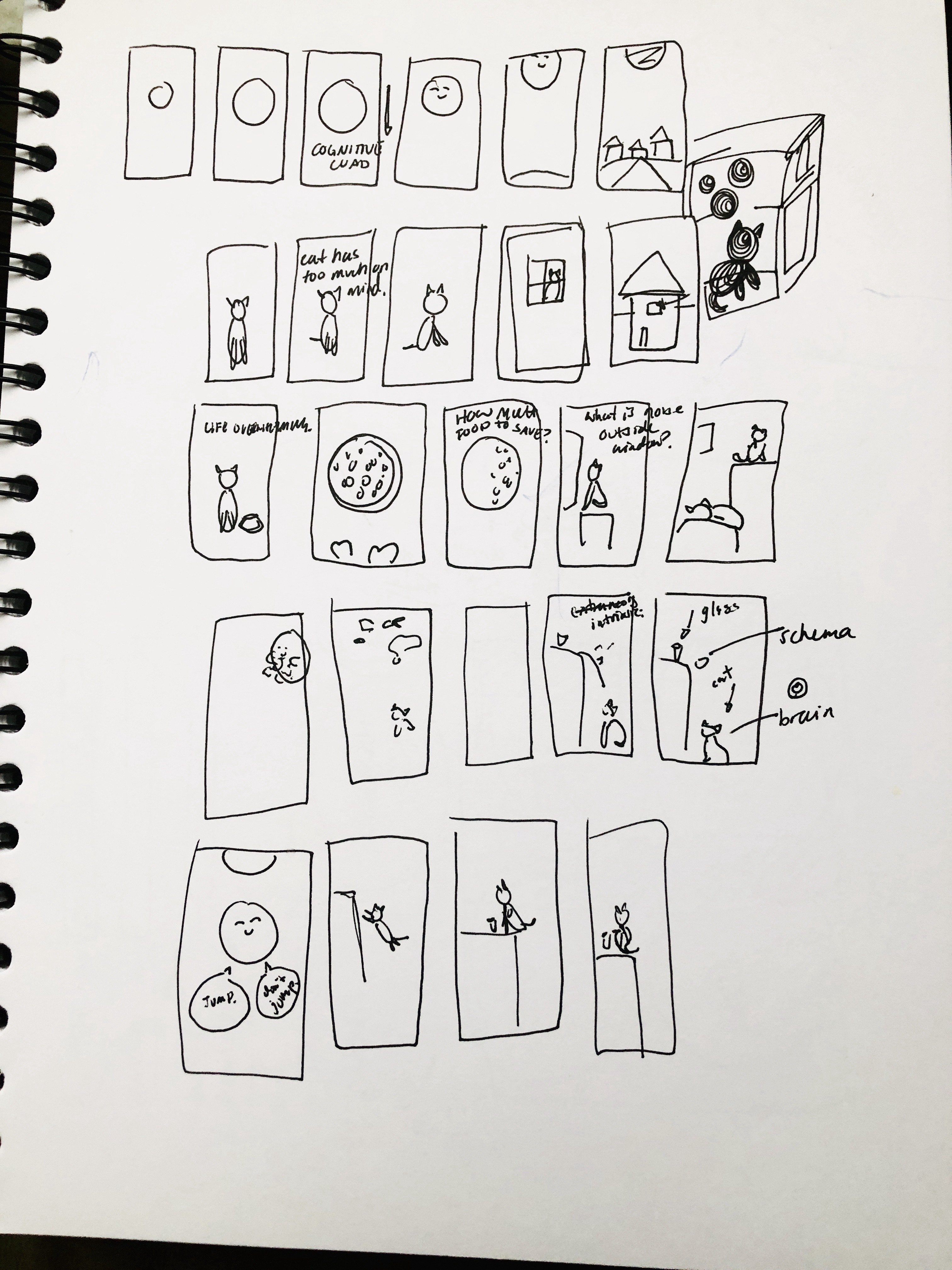
I thought about what a person looks like when they struggle with too much on their mind, and then what an animal looks like. It brought up flashbacks of trying to get my overwhelmed cat to come out and play after I had moved into a new apartment. I decided that key aspects of cognitive load, particularly familiarity and patterns, could be represented through trying to help an overwhelmed cat.
我考虑过一个人在脑海中挣扎过多时的样子,然后是动物的样子。 当我搬进新公寓后,它想起了让我不堪重负的猫出来玩耍的回忆。 我认为可以通过帮助不堪重负的猫来表现认知负荷的关键方面,尤其是熟悉程度和模式。
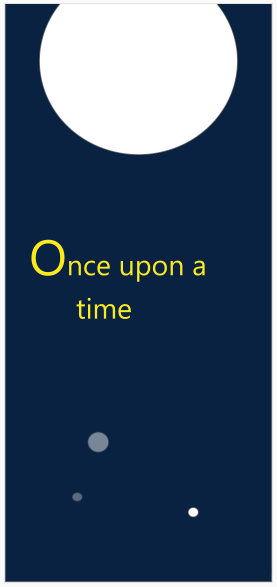
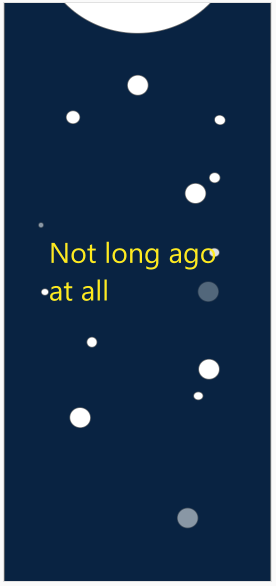

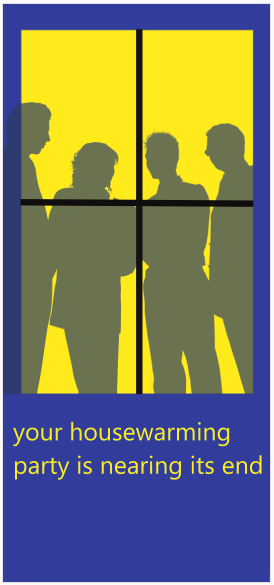

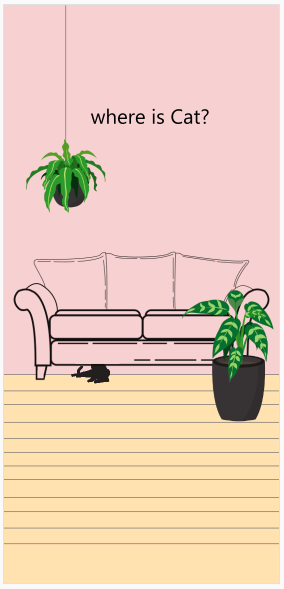
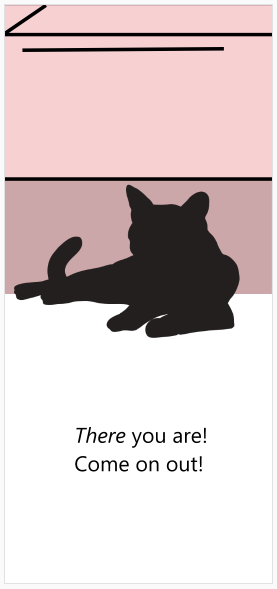
I wanted to make this story interactive, to make it somewhat of a cute game as opposed to just telling the user information. The game is to find different items within the apartment to lower the Cat’s cognitive load. Cat represents the overwhelmed user, the owner of Cat represents the designer. I decided to create three different sections that Cat needed help with, each section highlighting a unique perspective of cognitive load.
我想使这个故事具有交互性,使之成为一个可爱的游戏,而不是仅仅告诉用户信息。 游戏的目的是在公寓内找到不同的物品,以降低猫的认知负担。 猫代表不知所措的用户,猫的所有者代表设计师。 我决定创建Cat需要帮助的三个不同部分,每个部分突出显示认知负荷的独特视角。
Brightness & Noise = working memory cannot function when overwhelmed. Design with less stimuli.
亮度和噪音 =工作记忆不堪重负时无法正常工作。 设计刺激少。
Hungry & Thirsty = the less steps to achieve, the less load on working memory. Design with fewer steps between A & B.
饥饿与渴求 =所需的步骤越少,工作内存的负荷就越少。 在A和B之间进行较少步骤的设计。
Unfamiliarity = working memory works functions best when in a familiarity setting. Design using common signifiers and affordances.
不熟悉 =在熟悉的环境中,工作记忆最能发挥功能。 使用常见的指示符和辅助功能进行设计。
As each task is completed, Cat’s cognitive load goes down as the owner, aka the designer, has changed the settings.
随着每个任务的完成,由于所有者(也称为设计师)更改了设置,Cat的认知负担下降了。
Here’s an example using the first task.
这是使用第一个任务的示例。
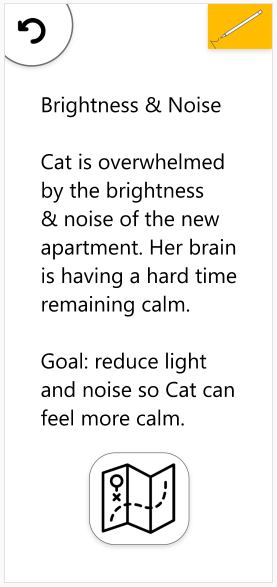
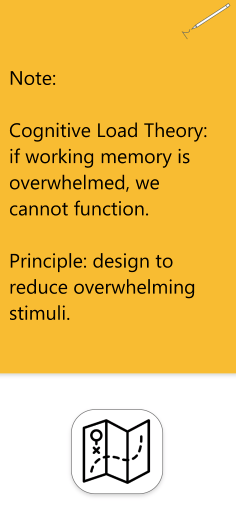


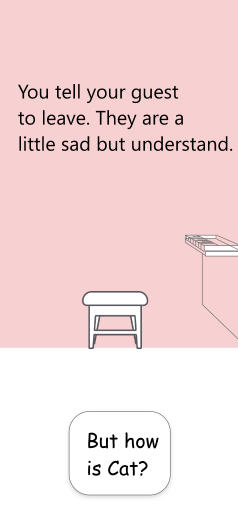
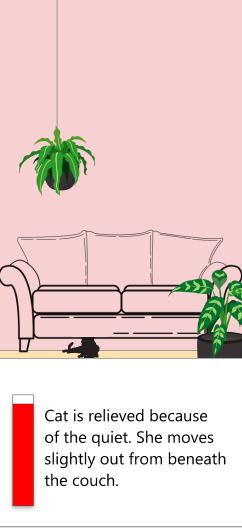
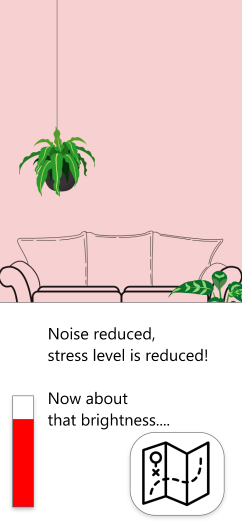
The other scenarios include a lamp, a kitchen, and a bedroom. The user can always make the wrong decision, which makes things worse for Cat, but the user is also always on a track to rectify the situation.
其他方案包括灯,厨房和卧室。 用户总是可以做出错误的决定,这会使Cat变得更糟,但用户也始终在纠正这种情况。
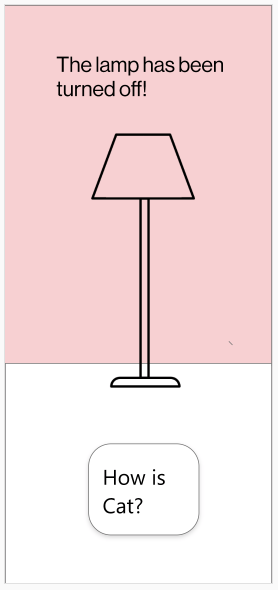
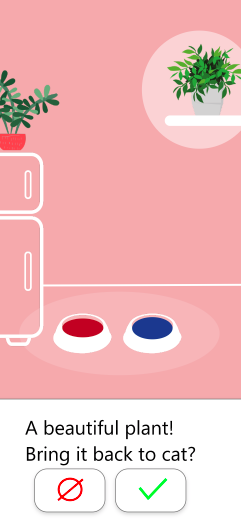
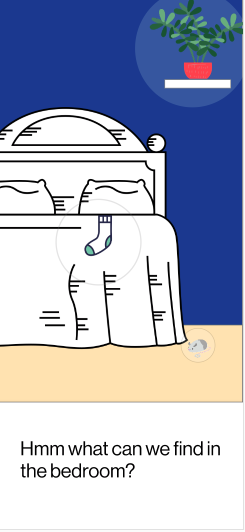
Eventually, Cat’s cognitive load decreases to the point where Cat tentatively comes out.
最终,Cat的认知负荷下降到Cat暂时出现的程度。
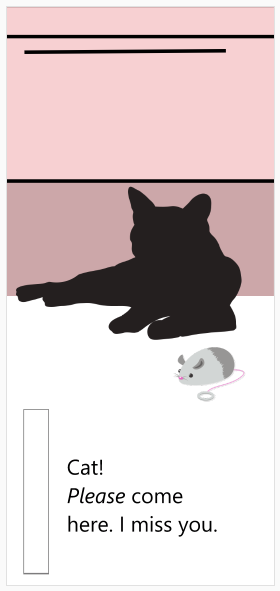
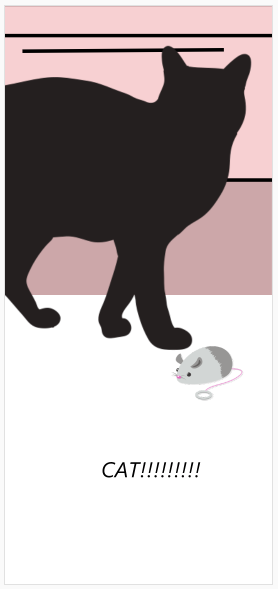

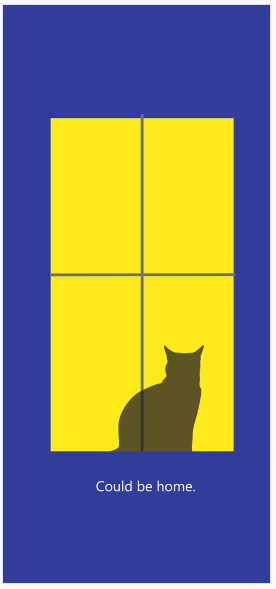
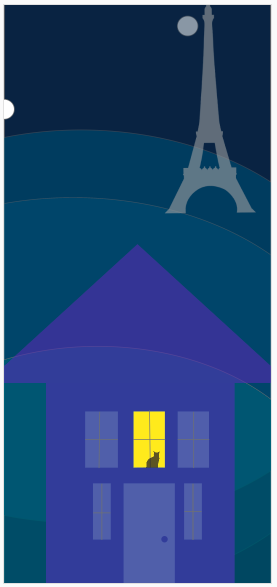
And, in the end, any user should feel like Cat at the end of the story using the principles of cognitive load. That they are somehow that feels safe and familiar.
最后,使用认知负荷原理,任何用户在故事的结尾都应该感觉像猫。 他们以某种方式感到安全和熟悉。

翻译自: https://medium.com/tessa-portfolio/an-app-about-a-cat-cc11510a996c
猫咪应用苹果版下载




















 748
748











 被折叠的 条评论
为什么被折叠?
被折叠的 条评论
为什么被折叠?








